$8,000 in revenue without even a product 💸| Tuple
Listen Up! IH - Episode 32
"Be useful on the internet"
👆 That's Ben Orenstein's advice for aspiring indie hackers.
Ben is the founder of Tuple - a remote pair programming app for macOS.
Ben, Joel and Spencer co-founded Tuple back in 2018 as a replacement for a popular app called Screenhero.
Screenhero was beloved by the developer community, and it eventually got acquired by Slack in 2015.
A couple of years later its pair programming features were killed.
With Screenhero gone, the Tuple team knew they could offer a similar product and serve the pent-up demand.
And Ben had the ideal customers for Tuple - a large audience of software engineers.
The audience and the demand was the perfect combination that allowed the Tuple team to do more than $8,000 in sales immediately without even offering access to the full product.
And more than $20,000 in sales without even a pricing page.
That was pre-pandemic.
During the pandemic, as the entire world started working remotely, Tuple's revenue quadrupled.
They are now making millions in revenue.
This is the Tuple story👇
Tuple - The Product👨💻
Tuple is a low-latency pair programming software product.
It lets two developers share their screens with each other and write code in parallel.
Two people can code features together, handoff control to each other, and have a conversation on a parallel video call.
All while using less CPU power than it takes to run Chrome!
That's a tough technical problem to solve.
But the company's marketing strategy is what allows them to thrive.
Tuple is a niche product -
- Meant only for developers.
- Who have a Mac.
- And who aren't happy with generic solutions like Zoom or Slack video.
That's a very narrow niche to target.
And the founders knew it would work because they were rebuilding a hero.
Rebuilding a Hero🦸♂️
Developers loved Screenhero.
Within the first 5 months of its launch, Screenhero was making $1M ARR.
They could have continued to run the company independently, but ultimately sold the company to Slack so it could reach more people.
Once it was bought, Slack killed Screenhero and merged it with its video conferencing features.
Ben knew there was a void in the market, and that he could build a profitable business there.
But he wasn't sure he could build the product.
And he wasn't sure how many people would pay for it.
He teamed up with co-founders Joel and Spencer to build the product.
Joel took the official title of COO and Spencer became the CTO.
Spencer's coding chops gave them all confidence that the product could be built.
But it would take a while to make it work well.
For 8 months Joel and Spencer built the first version of Tuple.
They had to build it, scrap it, and rebuild it a couple of times.
And even after several rebuilds it barely worked!
They launched the alpha to 12 teams and $8,000 in revenue.
The success of the launch was due to Ben having already cultivated an audience.
Power of an Audience👨👨👧👦
While Joel and Spencer were writing code, Ben was trying to sell the product.
Before starting Tuple, Ben had worked at thoughtbot, a product studio that helps clients design and develops their ideas into tech products.
As part of his job, Ben had worked on multiple SaaS apps.
A core part of thoughtbot's culture was "be useful on the internet."
And Ben is a strong proponent of that.
He was writing blog posts, building info products and small tech products for many years.
Had an active Twitter audience and an email list. His audience was primarily software engineers.
While building the audience, he didn't know what use would it be? He wasn't sure how he could benefit from the audience he had built.
Until he started Tuple. The perfect app for his audience.
There were 5000 people on Tuple's mailing list before the app launched.
And most of them were willing to give them money even before there was a product.
This is what one of the customers told Ben -
“I will pay you several hundred dollars just to support what you're doing because I've gotten so much value from you over the years. I don't even need what you're selling. I just want to support what you're doing here.”
Now it was only a matter of figuring out the right price for the product.
And for that, Ben employed some sales wizardry!
Sales Wizardry🧙♂️
Ben had around 5000 people on the Tuple mailing list. He didn't set up a pricing page and blasted out an email to them.
He segmented the list into batches of 500. And reached out to them to speak 1:1.
With every conversation, he tested a different pricing structure, ranging from $149/month per user to $599/month per user.
He even tried quarterly and annual plans, and also offered team plans.
At the time, Ben didn't even have a product to demo. He just told them about the features, about their story of building a screenhero alternative, and asked them for money.
And people paid up!
Every conversation was a signal to the correct price point.
Eventually, they honed in on the ideal price and set up a self-serve pricing page.
By then they had already done more than $20,000 in sales!
Today Tuple is priced at $25/month per user. And enterprises can get it at $10,000 per year.
Looking Ahead👀
Tuple's revenue quadrupled during the pandemic, way past anything they could have expected. So much that now they aren't sharing revenue numbers publicly.
They just say that they have "millions in revenue with tens of thousands of paying users".
Their product is used by engineers at Shopify, Stripe, and Netflix!
The team has grown beyond the three founders, they've hired developers and customer support people. They are building a Linux client now, and even hiring a product designer!
Advice🤗
Ben's advice to Indie Hackers is to be useful on the internet -
"...It's just – how can you be useful? How can you be helpful? How can you put out good things in the world? It's less about how many email subscribers do you have or how many Twitter followers? And more like, how many people have seen you do good things and gotten value from it?..."
Be useful, build an audience.
At least help people and have a presence on the internet, so by the time you launch something, you have a few friends backing you!
Let's look at key lessons from Tuple's success👇
Insights📊
- You can have revenue without a product! Or with a barely functional product. (Like Andrey Azimov had with Sheet2Site)
- As a bootstrapped founder, your best bet is to target a very narrow niche.
- There's no substitute for 1:1 user conversations. Ben used them to optimize pricing for Tuple. (Samy used them to optimize the product for Hypefury)
- "Building an audience" is the best investment you can make in your startup and all your future startups!
- Solving hard technical problems will always be valuable.
Ideas💡
- Build the Tuple for UX design - a "pair designing" app.
- A CRM tool for bootstrapped founders to manage customer conversations. Help startups Schedule, Record, Take notes and Learn from every user call.
- Dynamic Pricing page generator for SaaS apps. Depending on certain conditions, every user sees different pricing options and copy. Help startups A/B test their pricing.
- Niche content site + Job board around remote work and pair programming.
- User interviews as a service. Conduct user interviews for startups, and share insights around product and pricing. (Ask "mom test" questions)
Inspiration🤩
- Ben was a "useful" member of the developer community for 12+ years before he launched Tuple. Build an audience, and be patient.
- If you have a validated problem, ** it's okay to take some time to build the product.** The first version of Tuple took 8 months to build.
- Marketing + Coding is the best co-founder split possible. Find a partner with complementary skills. (like Molly and Shane from The Agent Nest, Nadav and Gideon from Riverside, Samy and Yannick from Hypefury)
- "Build in Public". Ben shares good and bad updates about Tuple on his podcast every week, which helps him build loyal fans who are connected with the story of the product.
Landing Page Lessons👨🏫
Insights from the landing page of tuple.app
- The headline zeroes in on the exact target niche - "best pair programming app on macOS"
- The accompanying visual is of two developers sitting together and coding on a single machine, but they are in different time zones. The exact experience Tuple wishes to emulate.
- The copy speaks directly to developers, and it emphasizes that the founders are developers themselves.
- There's a small note from the founders about why they are building Tuple and why "developers like us deserve better tools".
- The note also takes on the usual competitors like Zoom, Slack, and Google Meet.
- There's a fantastic video of Ben doing a product walk-through on the home page. Video is the best way to connect with your audience.
- Features are described as Benefits, using words that evoke emotions like 'seamless',' crazy-low' and 'Ridiculous'.
- Social Proof - The home page has a picture and a quote from Shopify's VP of engineering.
- More Social Proof - Quotes from the influential voices in the developer community like DHH from Basecamp and Justin Jackson from Transistor.
- The CTA is the least friction activity the user can do - Start a Free Trial.
- There's a question right before the CTA button. Questions lead to actions!
- And when you're about to start the trial, they tell you that they will remind you before the trial ends and refund if you forget to cancel. That copy builds trust!
Growth Channels📈
- Tuple has done no paid marketing.
- Tuple saw Hockey Stick growth during the pandemic as most of the world started working remotely.
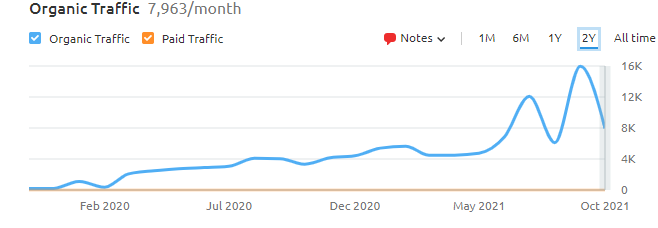
- Most of Tuple's traffic is to their homepage, so it's either their users logging into the app, sharing the app through word of mouth.
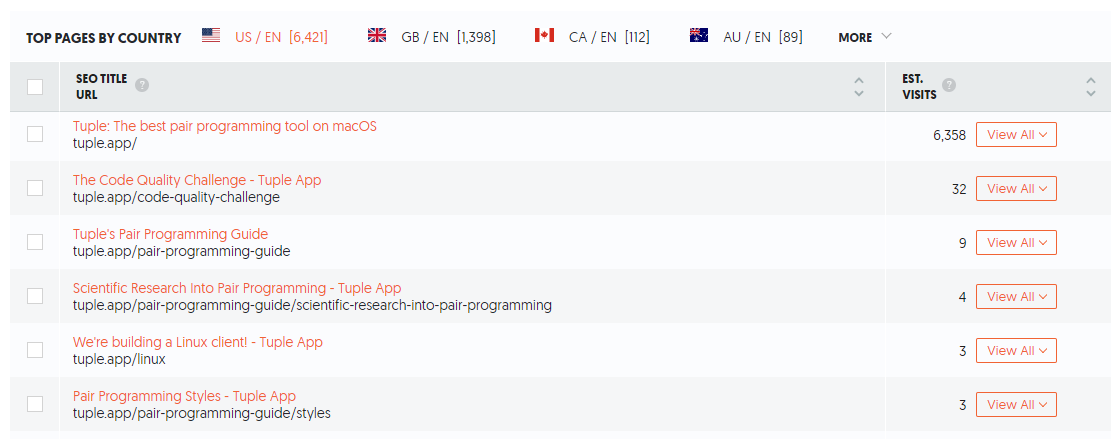
- Audience Building Channels - Ben has built up a large following through multiple methods.
- Ben's email list, his podcast - The Art of Product, and Ben's Twitter account.
- His info products like "Refactoring Rails", and his talks like "Refactoring from Good to Great"
Top Keywords that Tuple ranks for -
- They run a coding challenge that brings in some word of mouth traffic as well - The Code Quality challenge.
- And they are doing content marketing through exhaustive guides - Pair Programming Guide.
- This guide got a backlink from the Pair Programming Wikipedia page. Which establishes Tuple as an authority in the pair programming space.
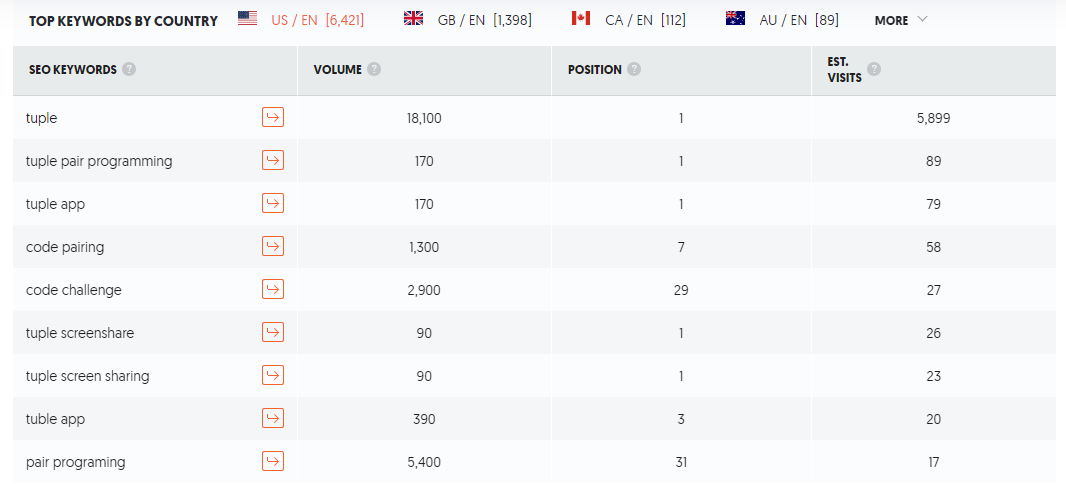
Related Trends📈
Tuple has benefitted from the remote work trend. And the trend is here to stay.
- Google trends for "Working remotely"
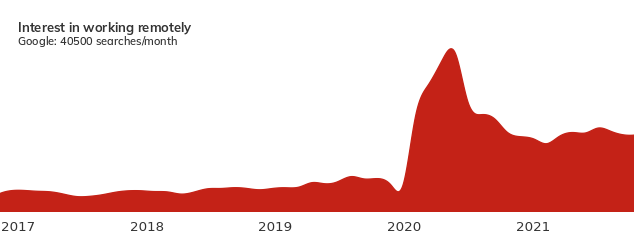
- Remote jobs trends on Hackernews job listings. (source)
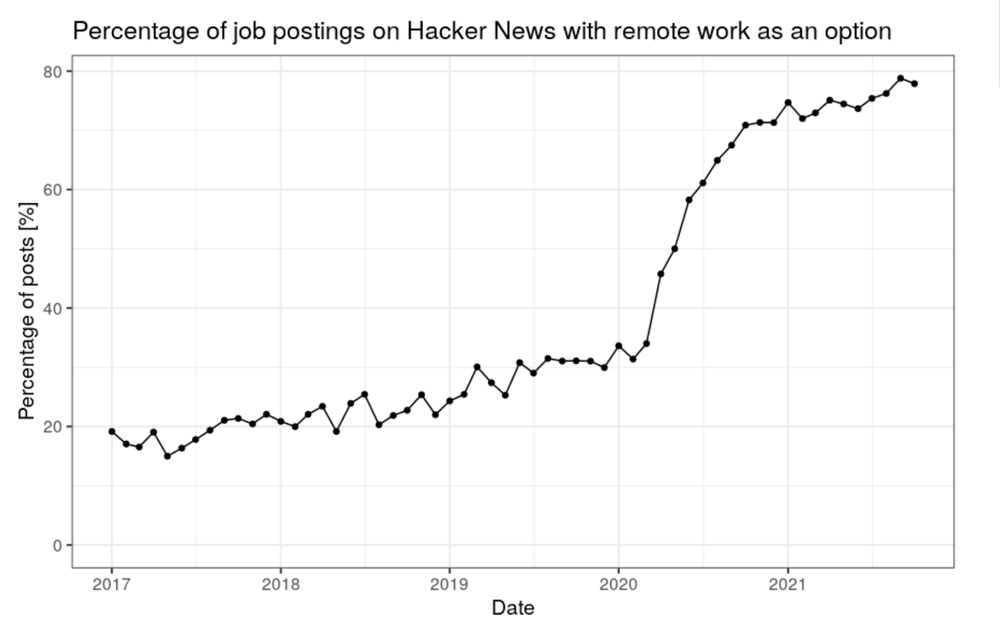
- r/remotework subreddit is small but growing.
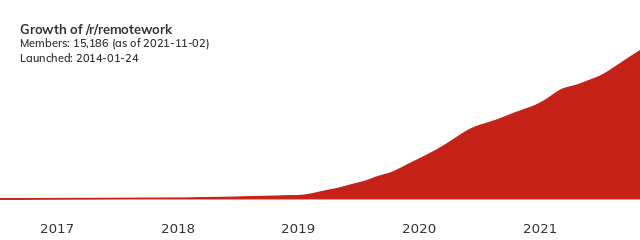
- The top posts in this subreddit are either around remote jobs or remote work news. It makes sense to build a niche content website around remote work.
- Remote work market map (source) -
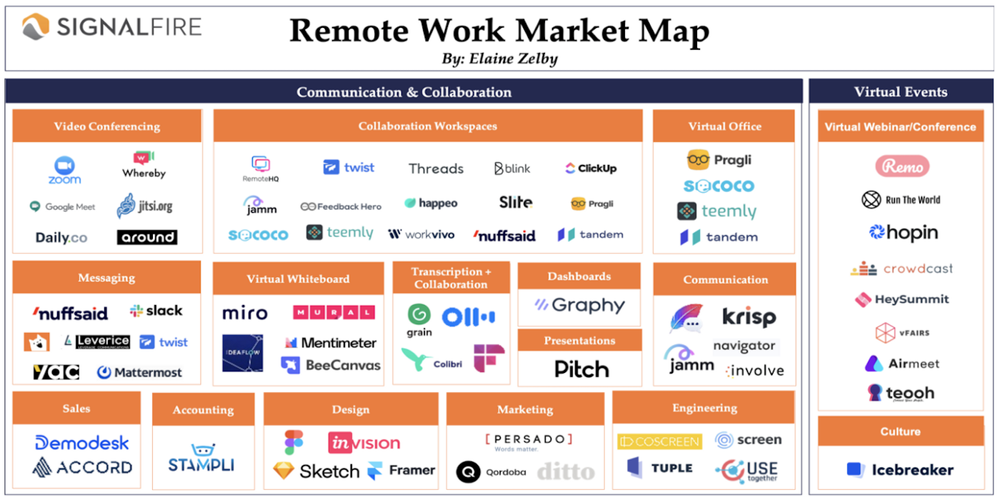
Related Opportunities💰
Micro startups that you can acquire or get inspired to build your own.
- Profitable SaaS that creates connections within organizations by connecting relevant people over virtual lunch or coffee. Increased traction due to remote working
- Asking Price : $700 K
- ARR : $ 90 K
- Free weekly newsletter for executives who are interested in working remotely.
- Asking Price : $ 2000
- Fully functioning remote jobs platform, ready to market. The seller does not have the time to work on it at the moment.
- Asking Price : $ 6000
Links🔗
- How Three Founders Created a Profitable Business That They Haven't Even Launched Yet with Ben Orenstein of Tuple | Indie Hackers Podcast #096
- Idea to Validation to Launch: The First 365 Days of Tuple – Ben Orenstein – MicroConf Starter 2019 | YouTube
- Ben Orenstein Reddit AMA
- Quick Chat with Ben Orenstein of Tuple | Indie Hackers Podcast #113
- Remote Work Market Map | Medium
Thank you for reading🙏
ICYMI : Last week I wrote about the business newsletter bundle Every.
Every week, I share the most actionable insights and inspiring tips from successful Indie Hackers FOR aspiring Indie Hackers
Ideas + Insights + Inspiration for building profitable internet businesses💪
Sign up to Listen Up! IH and join 1550+ spirited Indie Hackers who read this newsletter every week.
Thanks to Seth King for editing this post
Google and Reddit trends chart courtesy UnderTheRadar.io.
Cheers,
